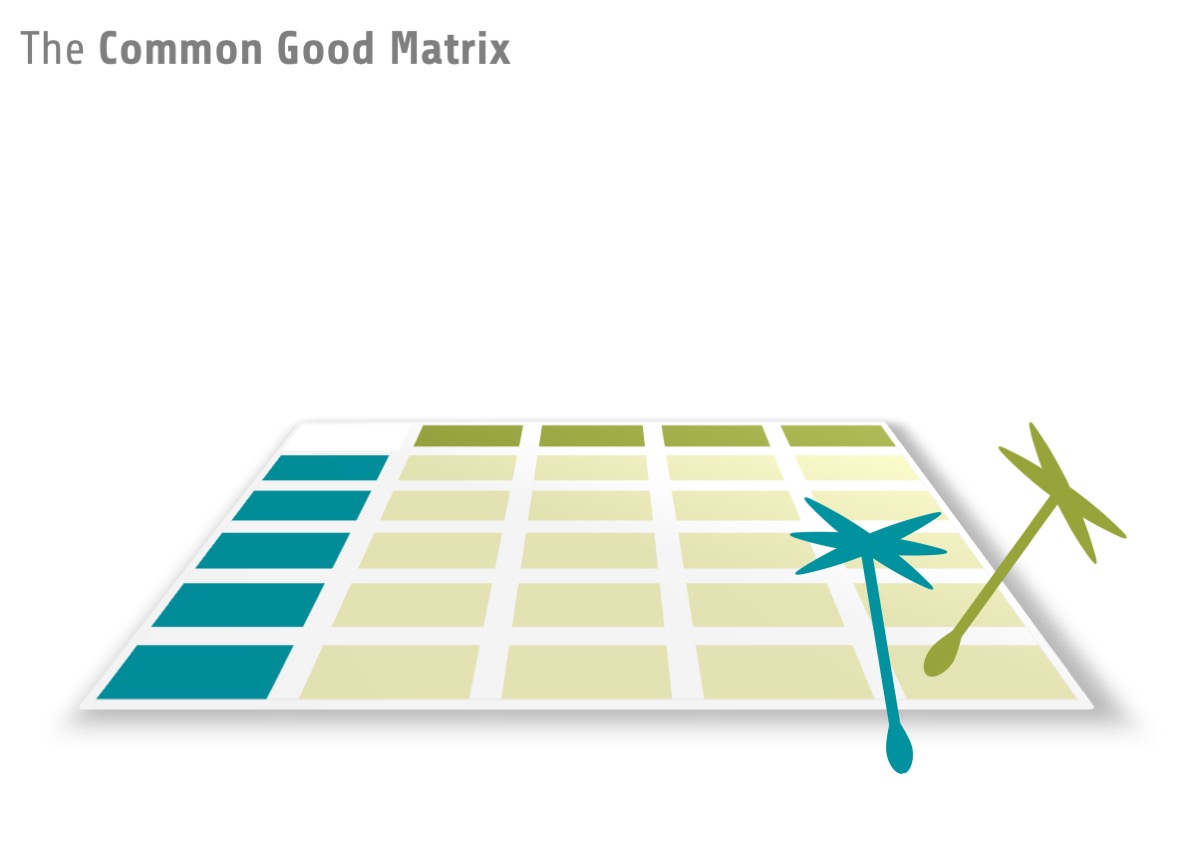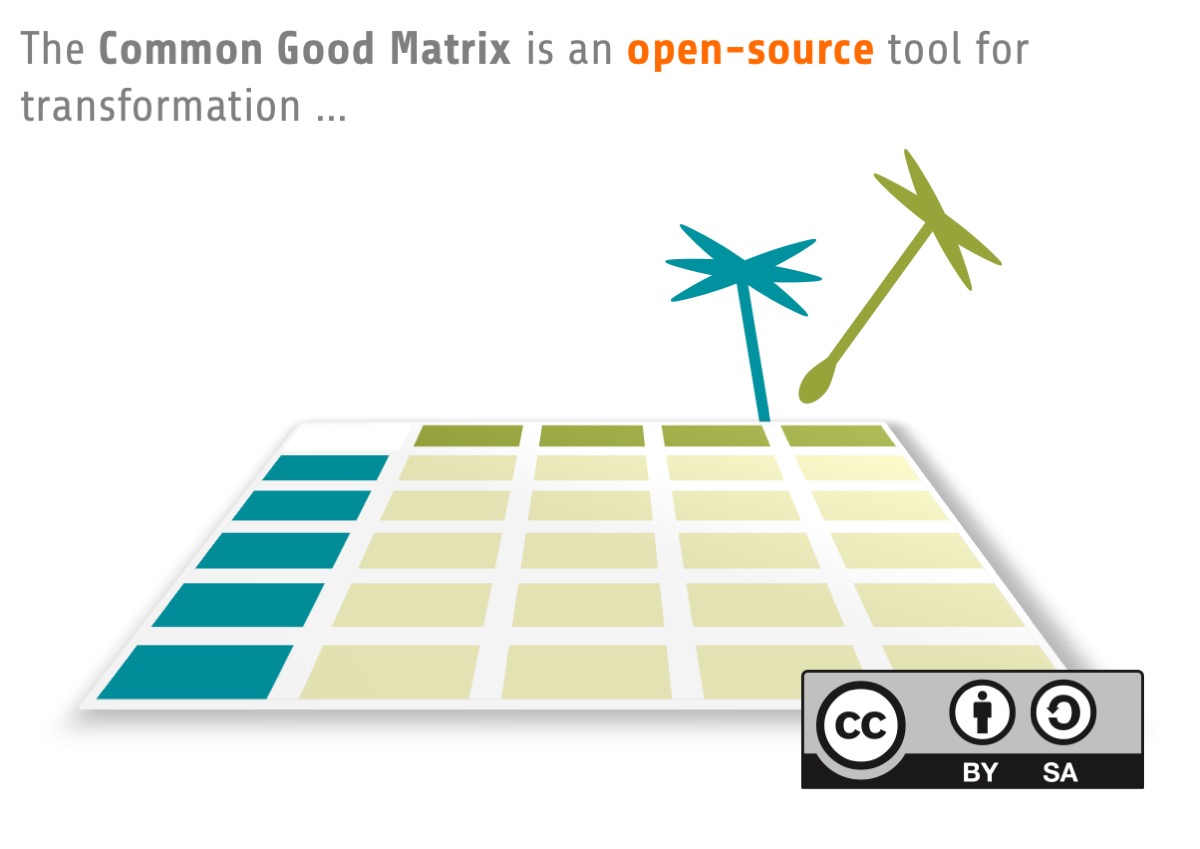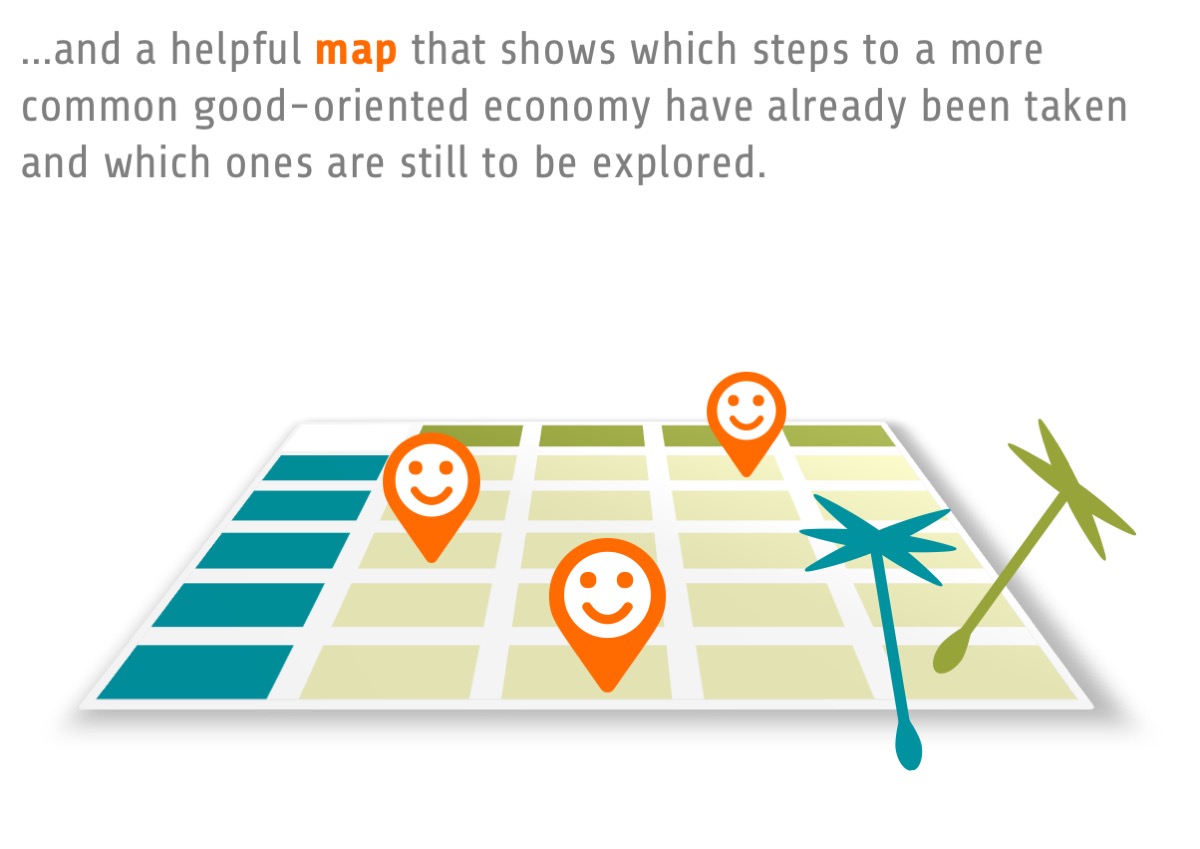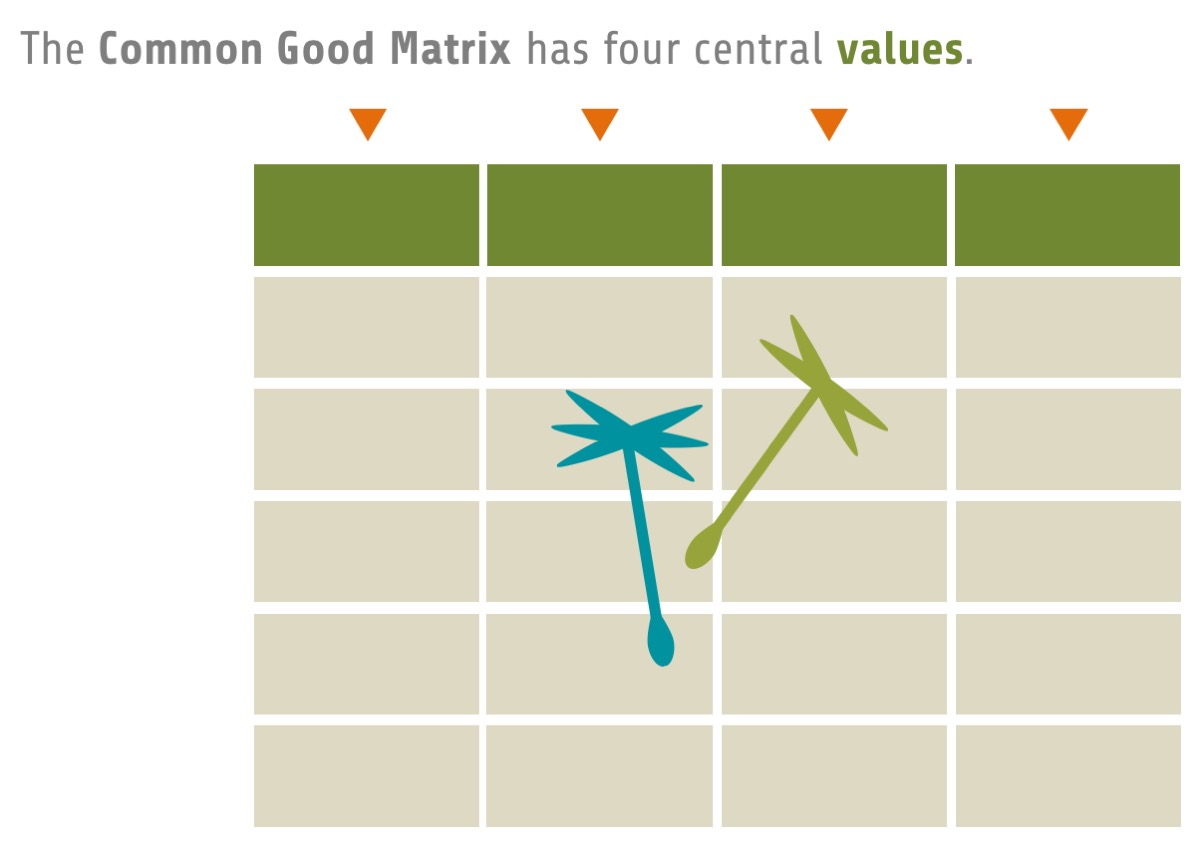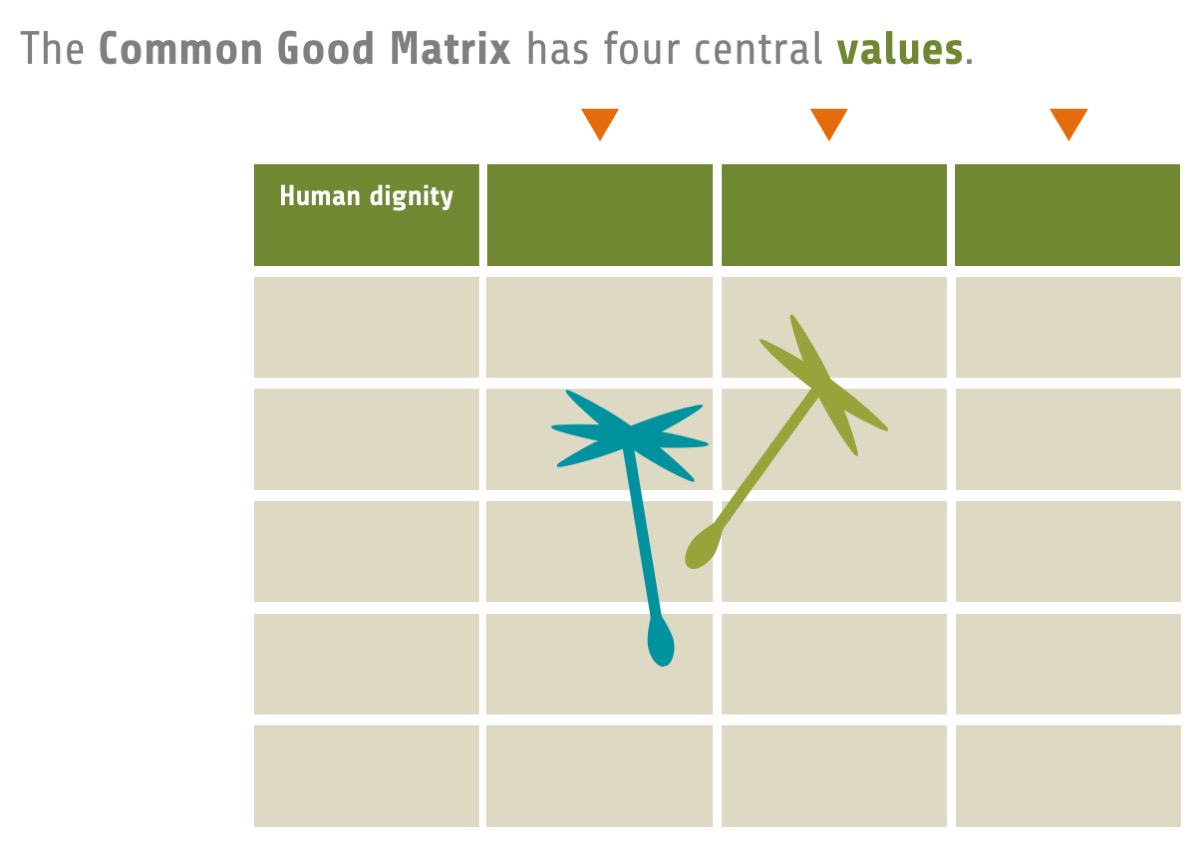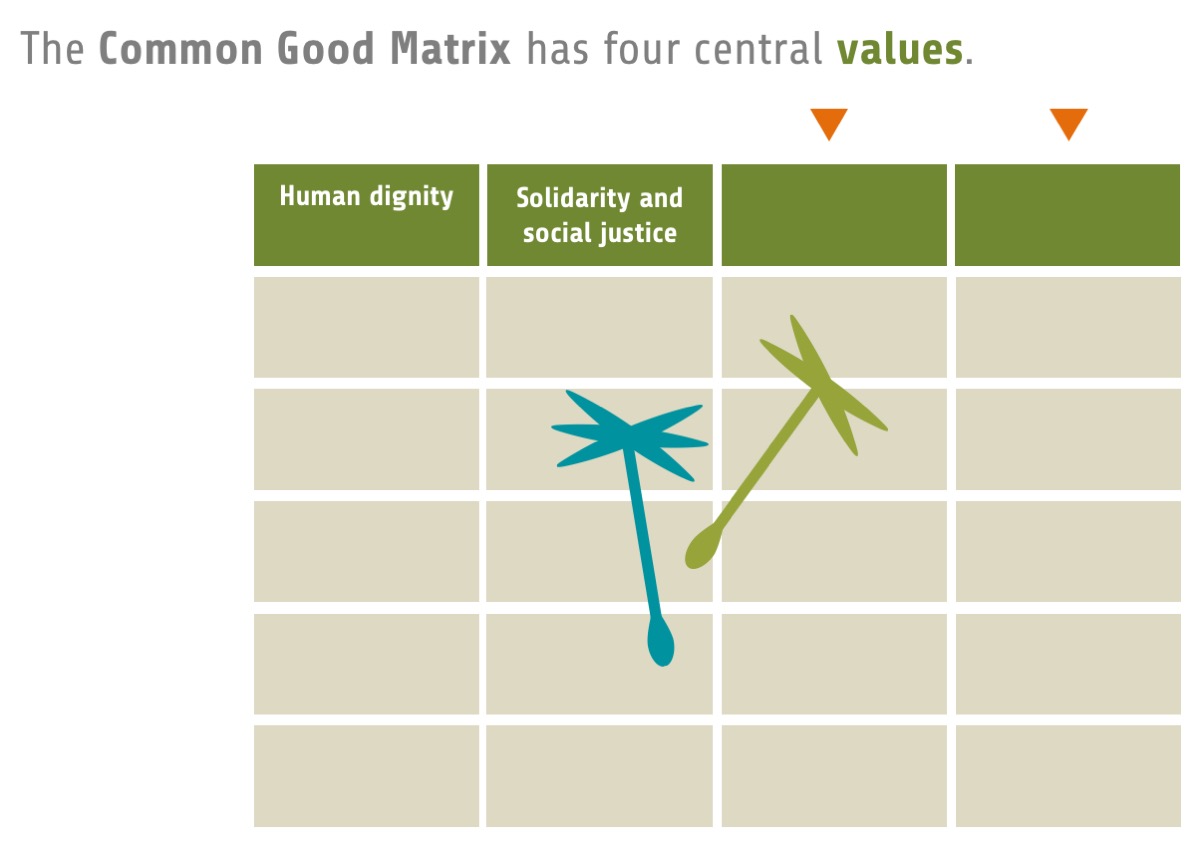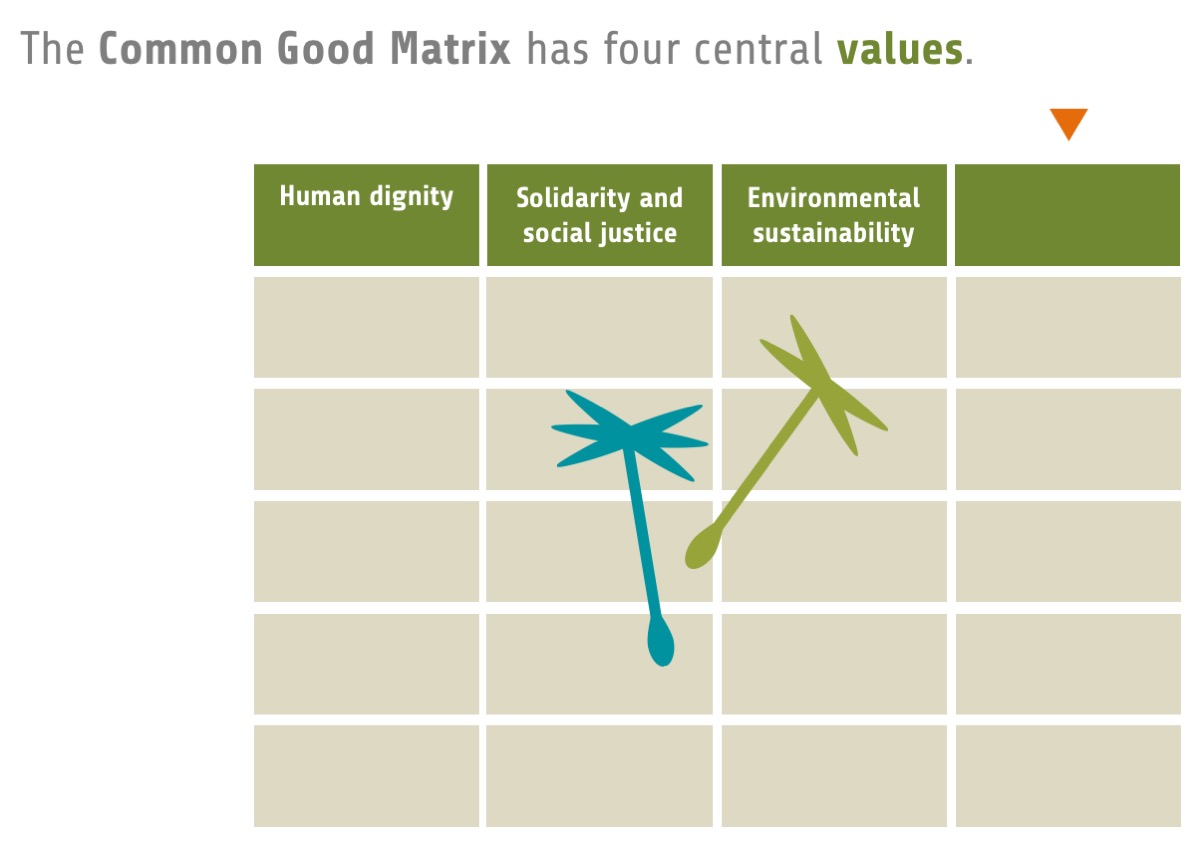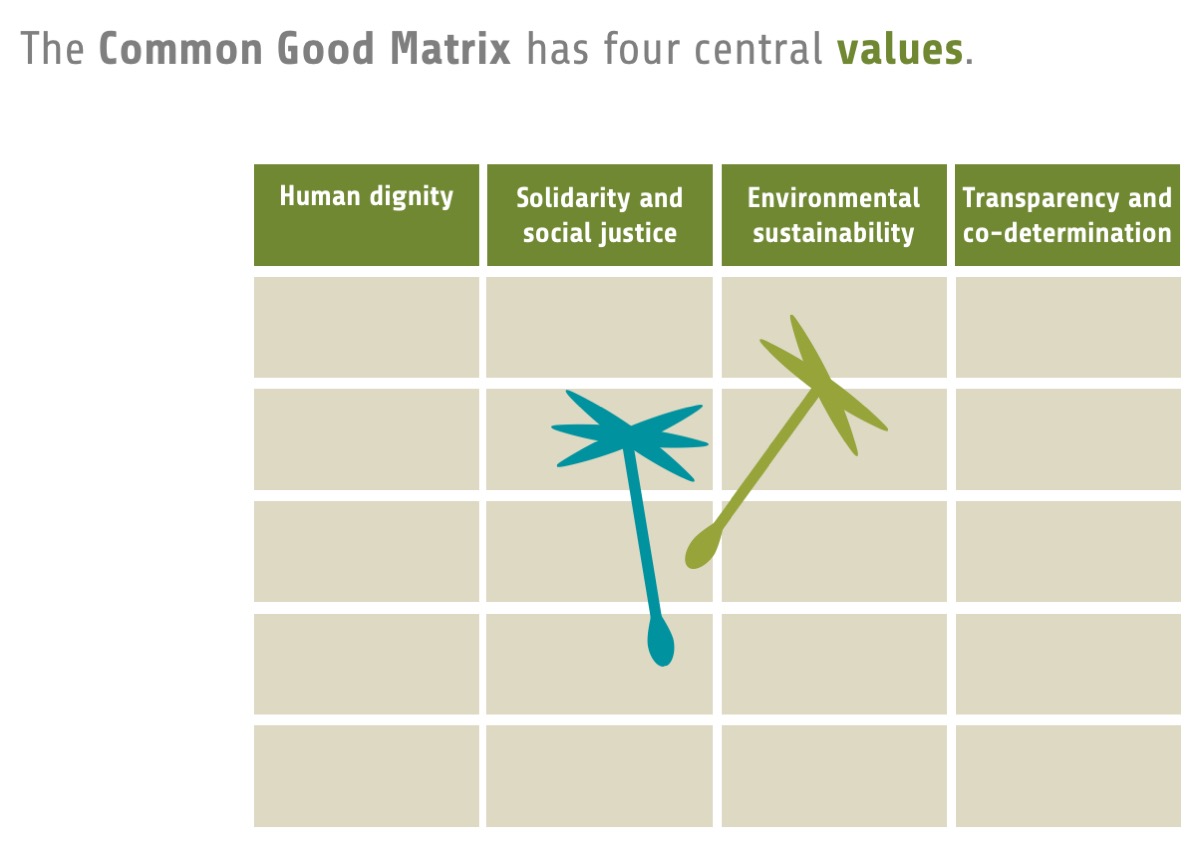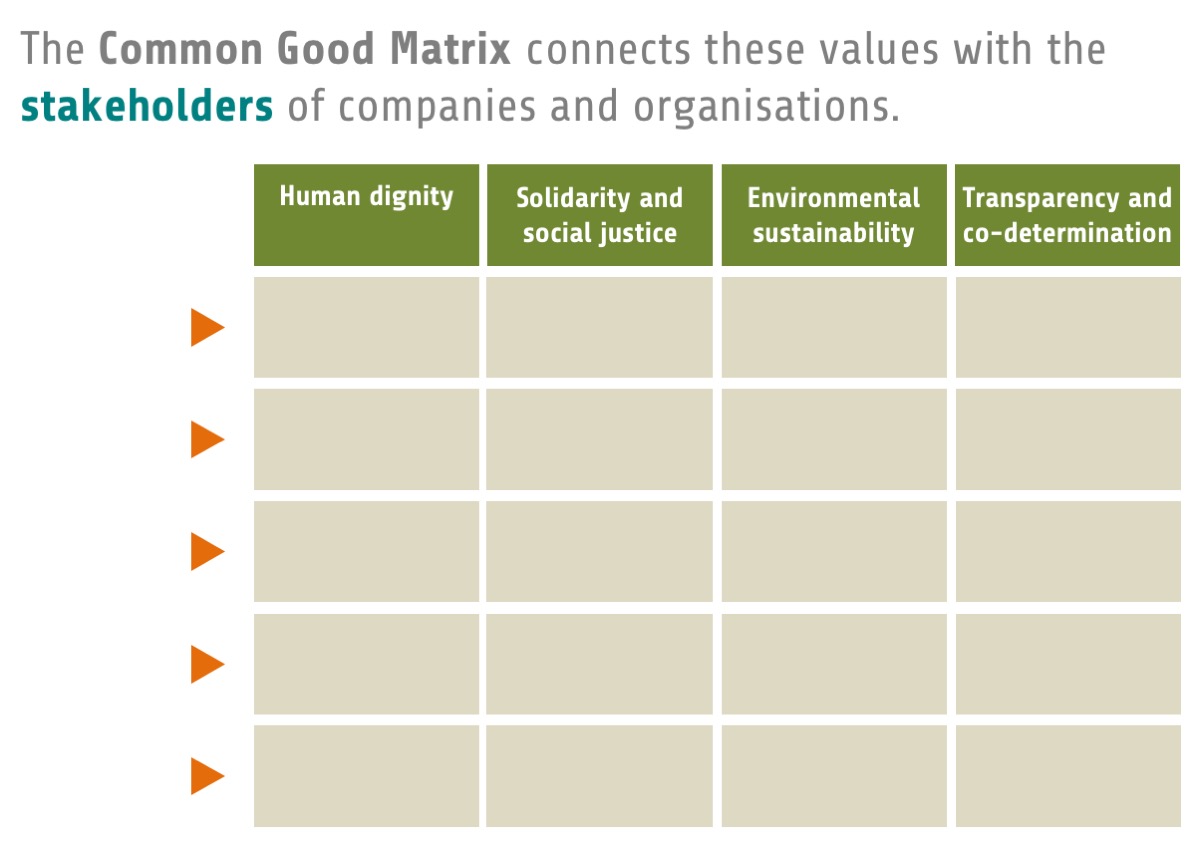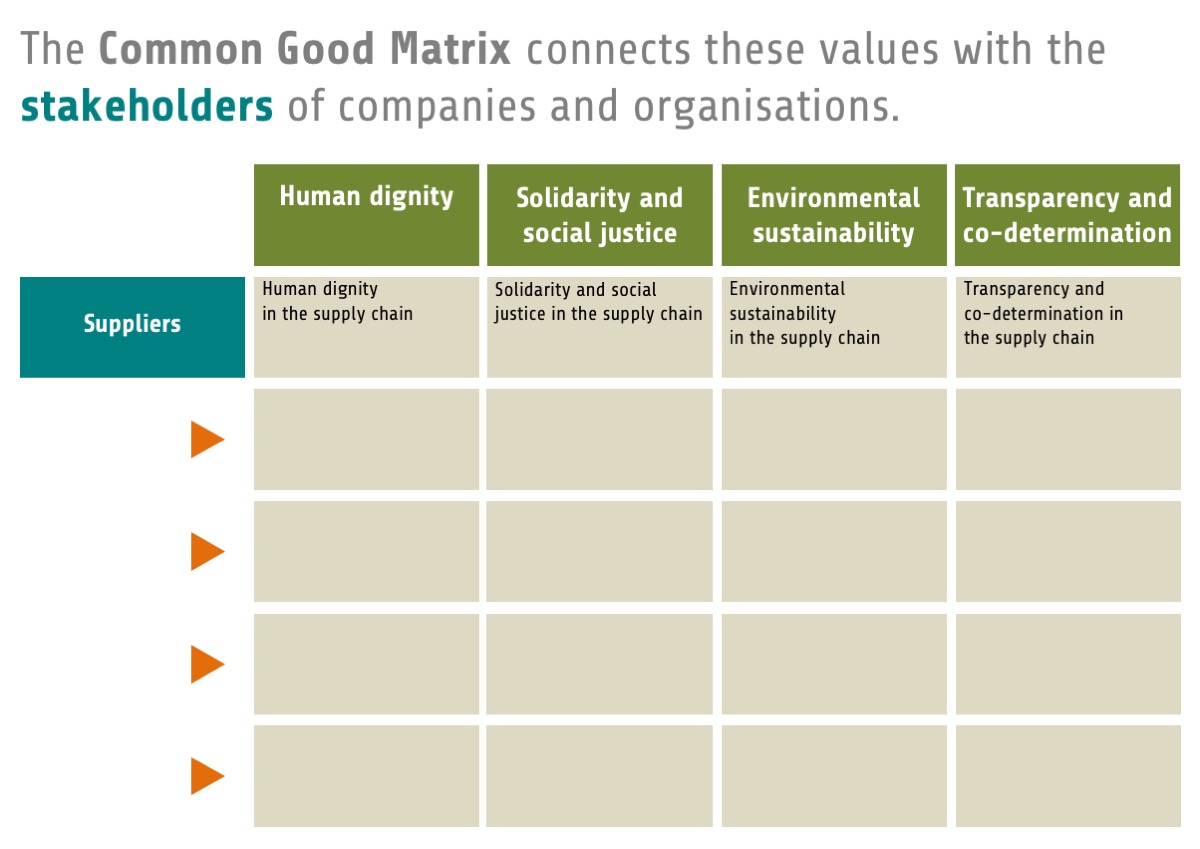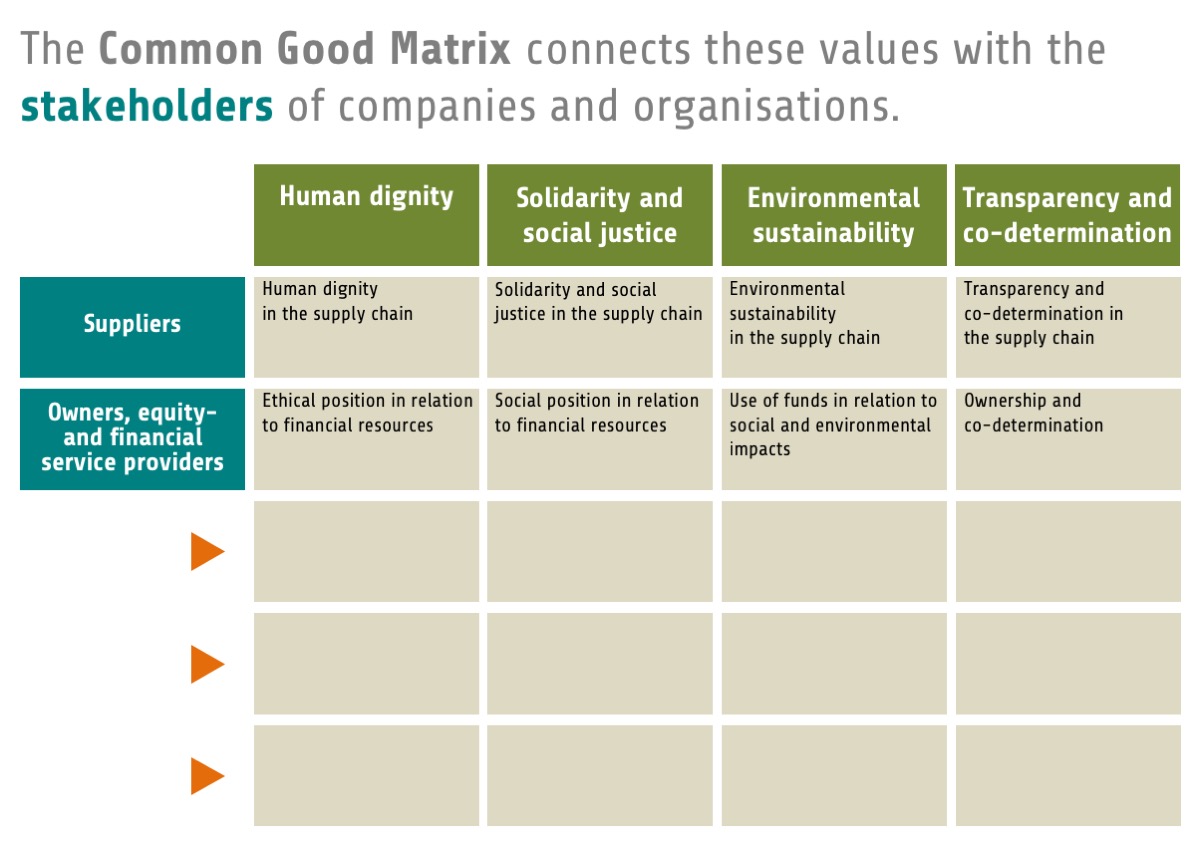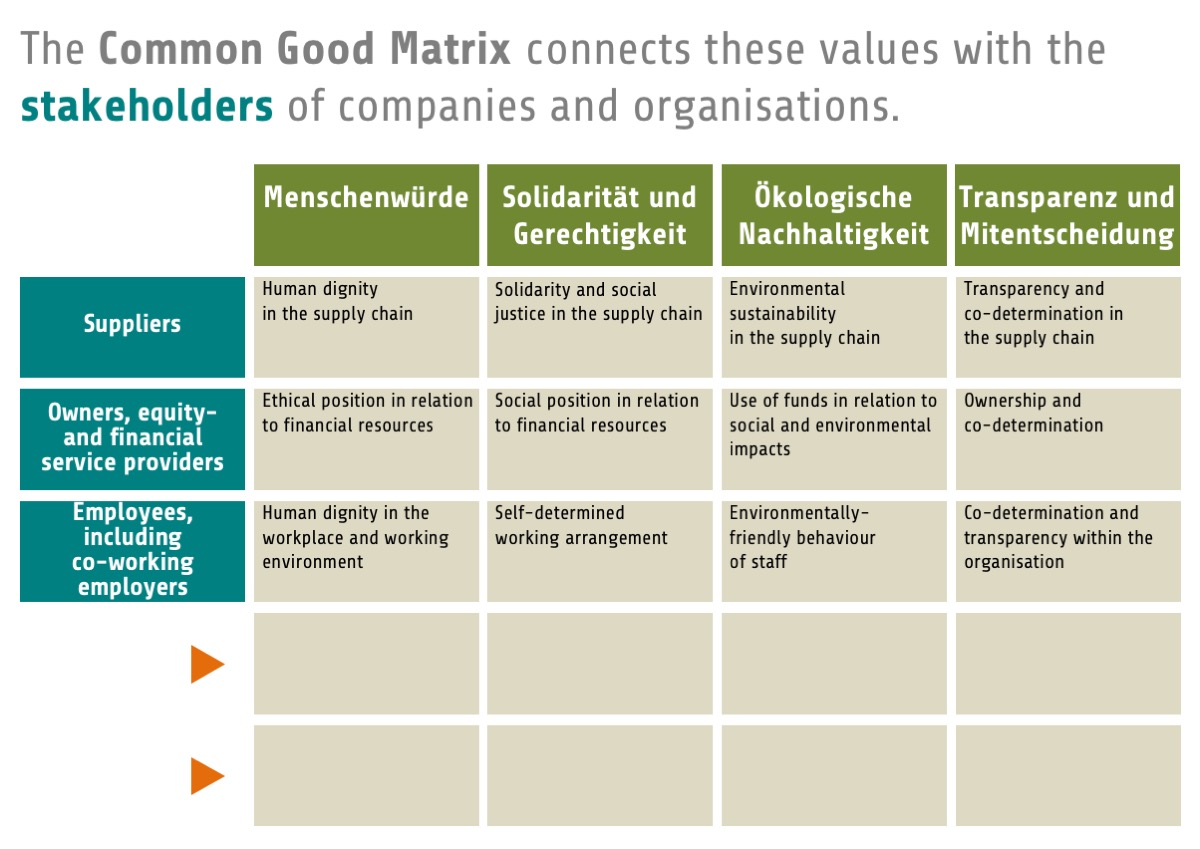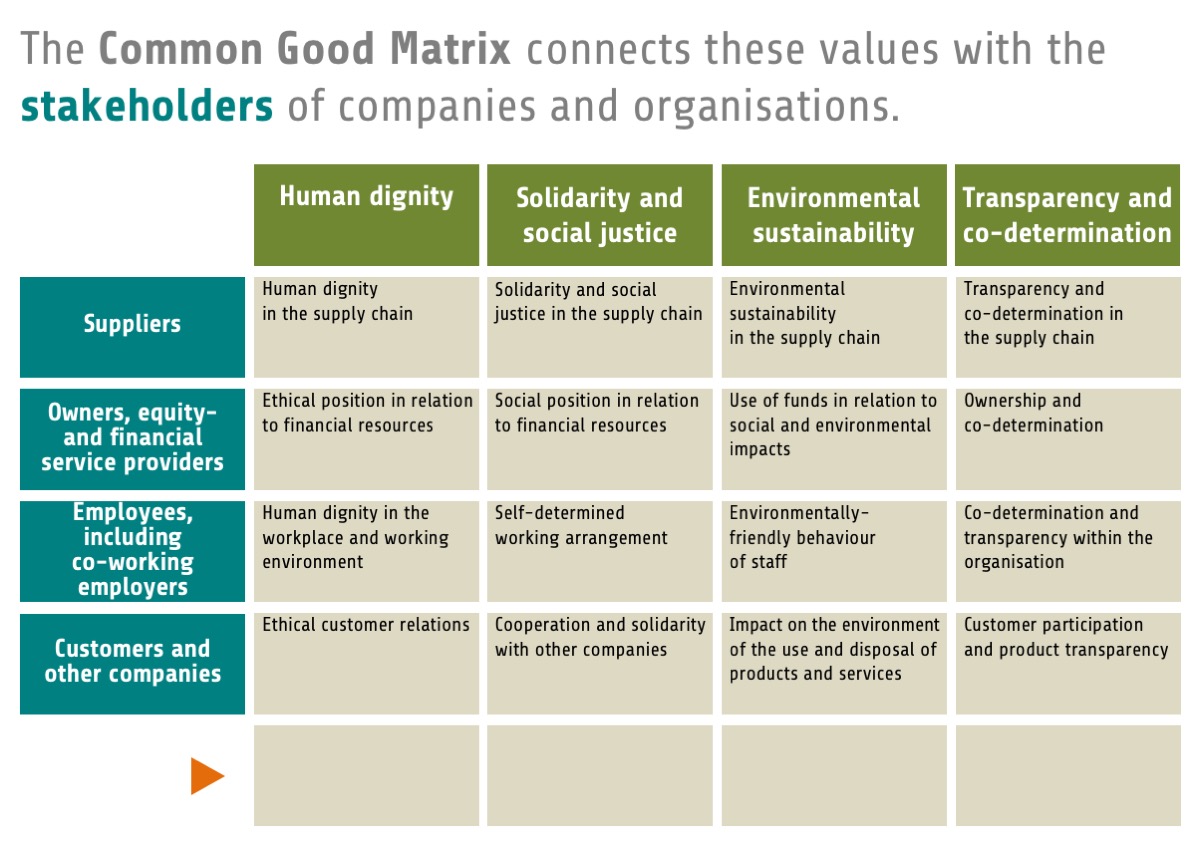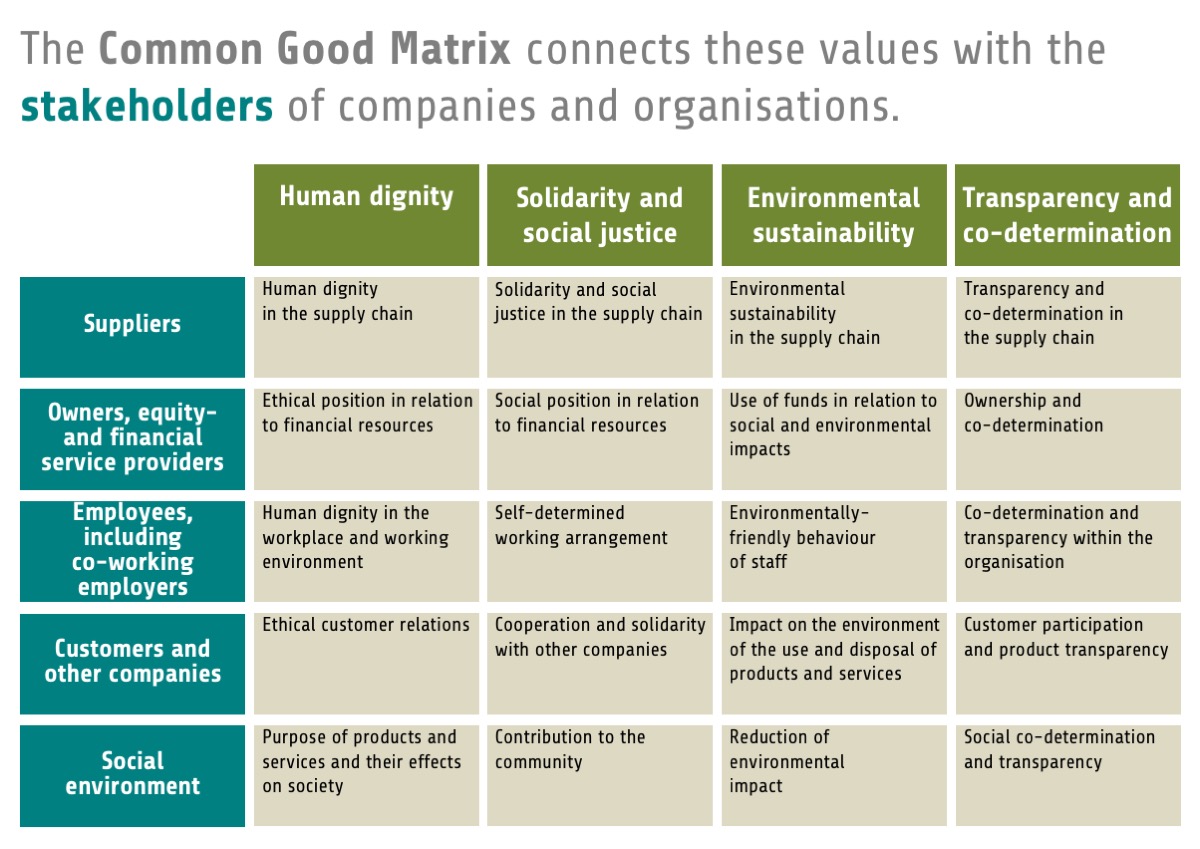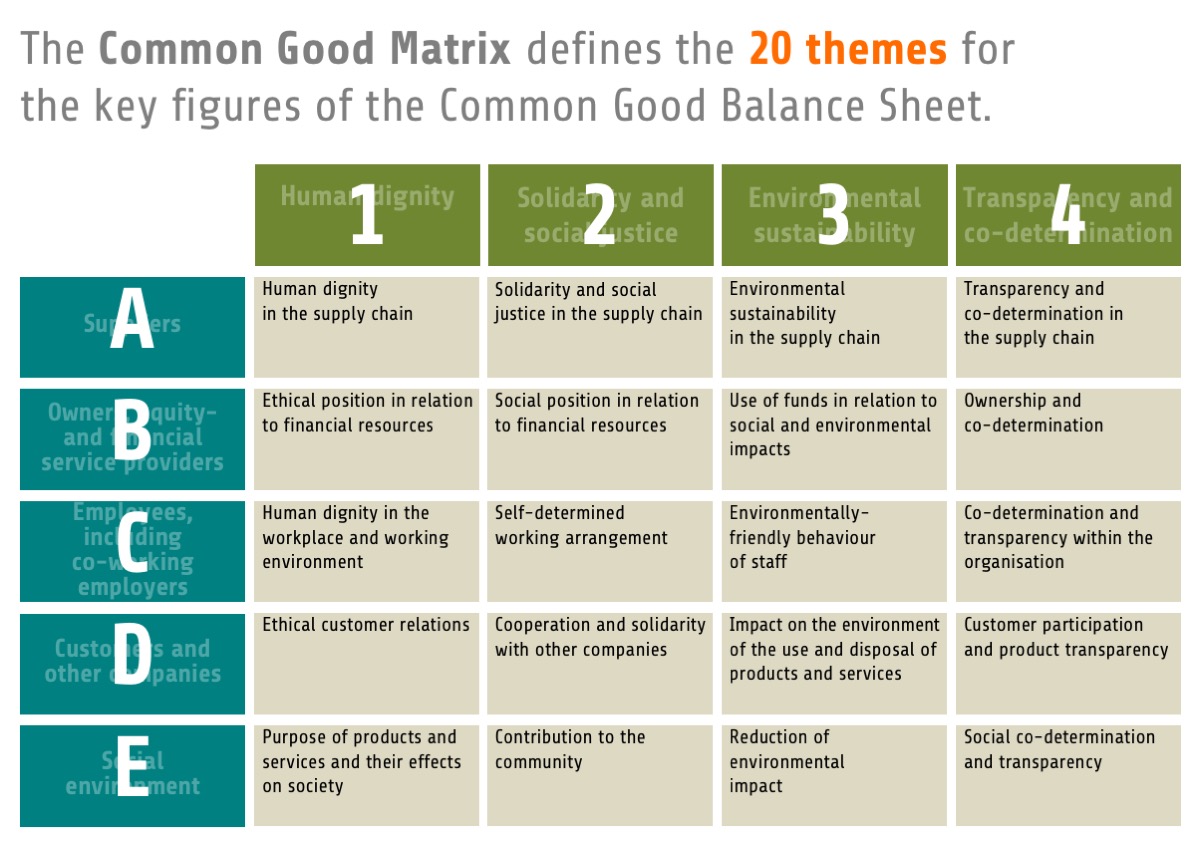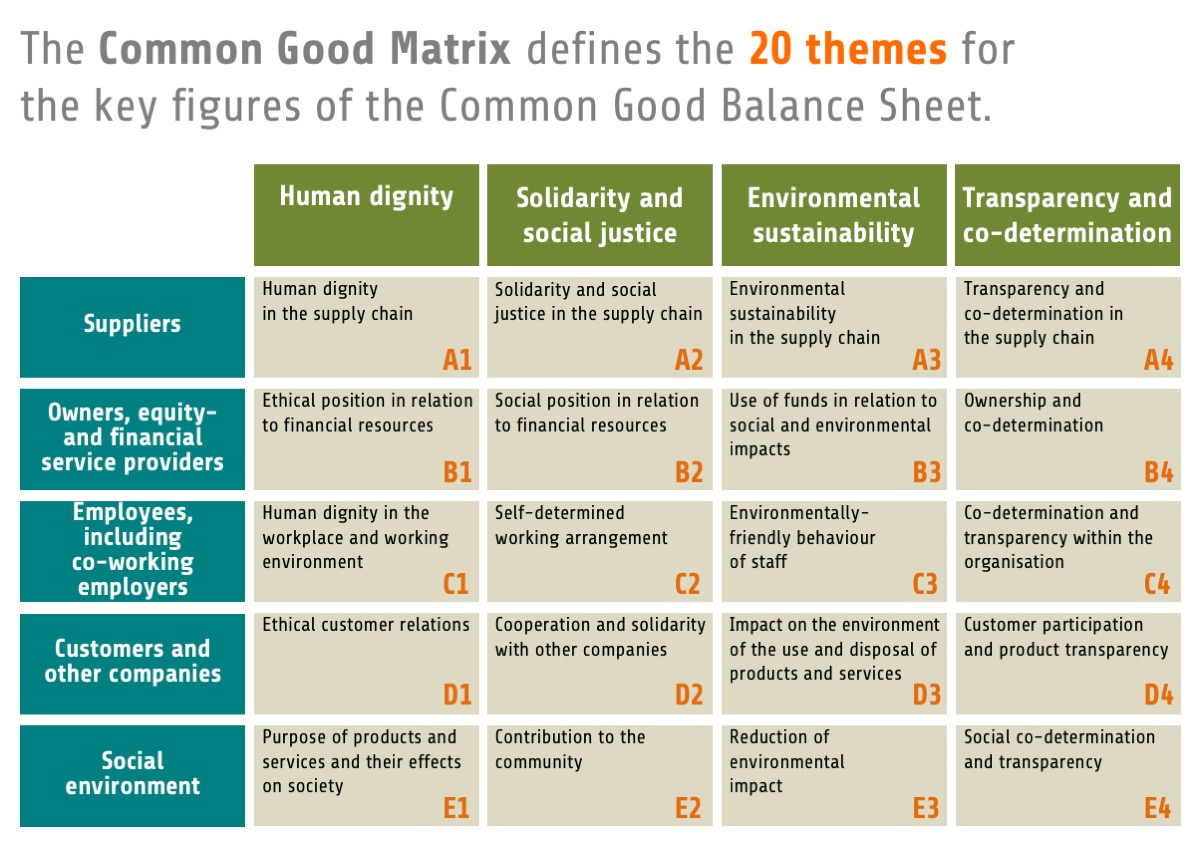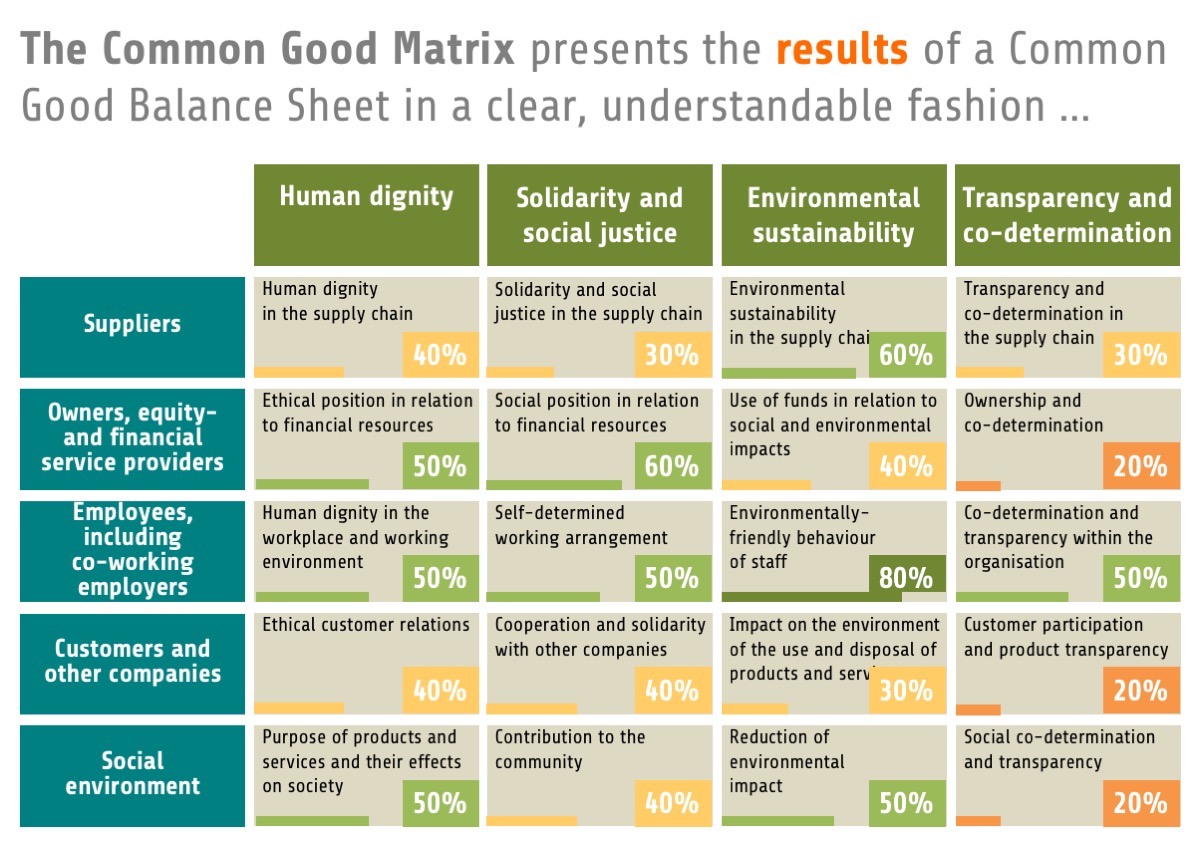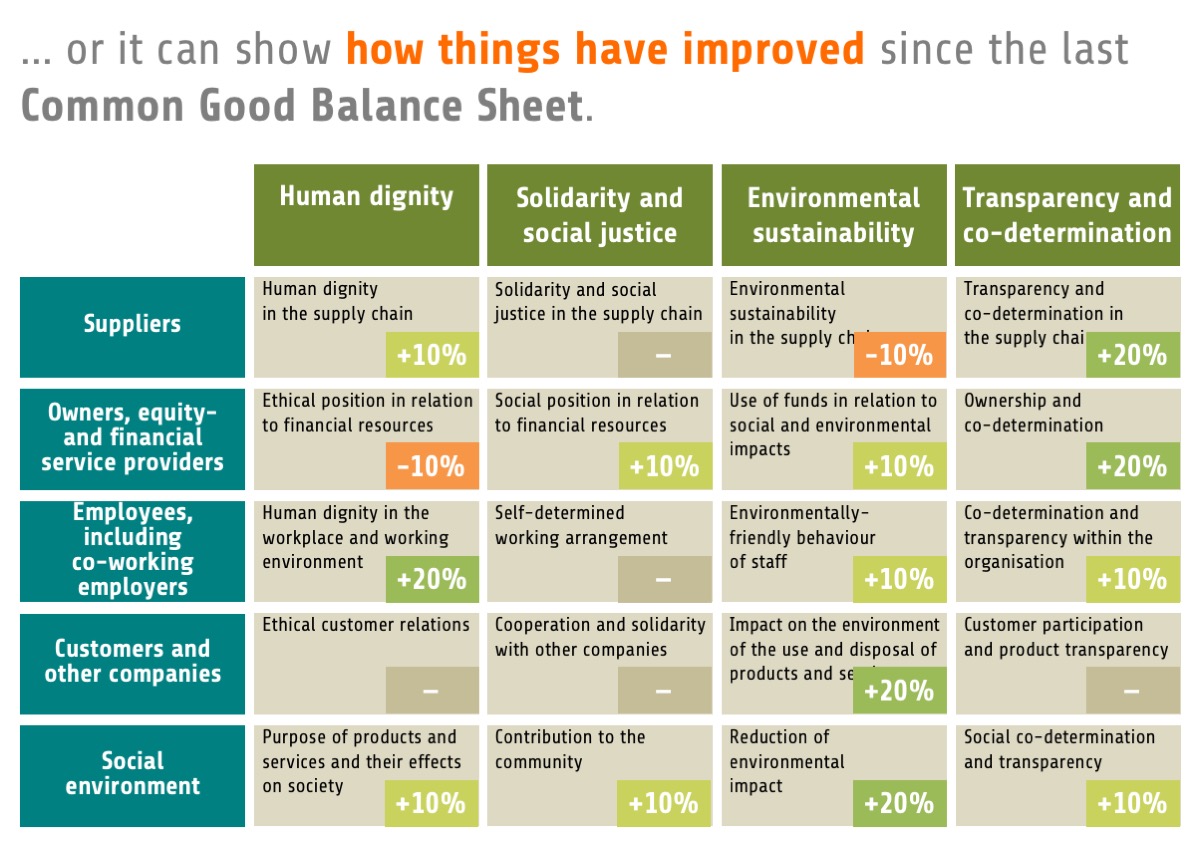The Common Good Matrix is a model for the organizational development and evaluation of entrepreneurial as well as charitable activities. It assesses and scores the contribution to the common good. The values shown in the columns are those which promote successful relationships and a good life. The rows reflect the five stakeholder groups which an organization has most contact with. In the intersections between the values and the stakeholder groups, 20 common good themes describe and evaluate an organization’s contribution to the common good.
Watch or click through this animation to learn more.
Click on the individual themes to show further information.
The purpose of this evaluation is to show the impact of corporate activities on the common good. In the assessment process, the organisation positions itself on a scale depending on how developed each value is in the organisation. The process of creating the report therefore promotes the further development of the organisation in a way, which is value-oriented.
The Common Good Matrix lies at the heart of the Common Good Balance Sheet, a comprehensive documentation of the Common Good orientation of an organization. Producing a Common Good Report makes it clear how the respective value is lived regarding the respective stakeholder group, what the potential of the theme is and which areas are worth developing.

